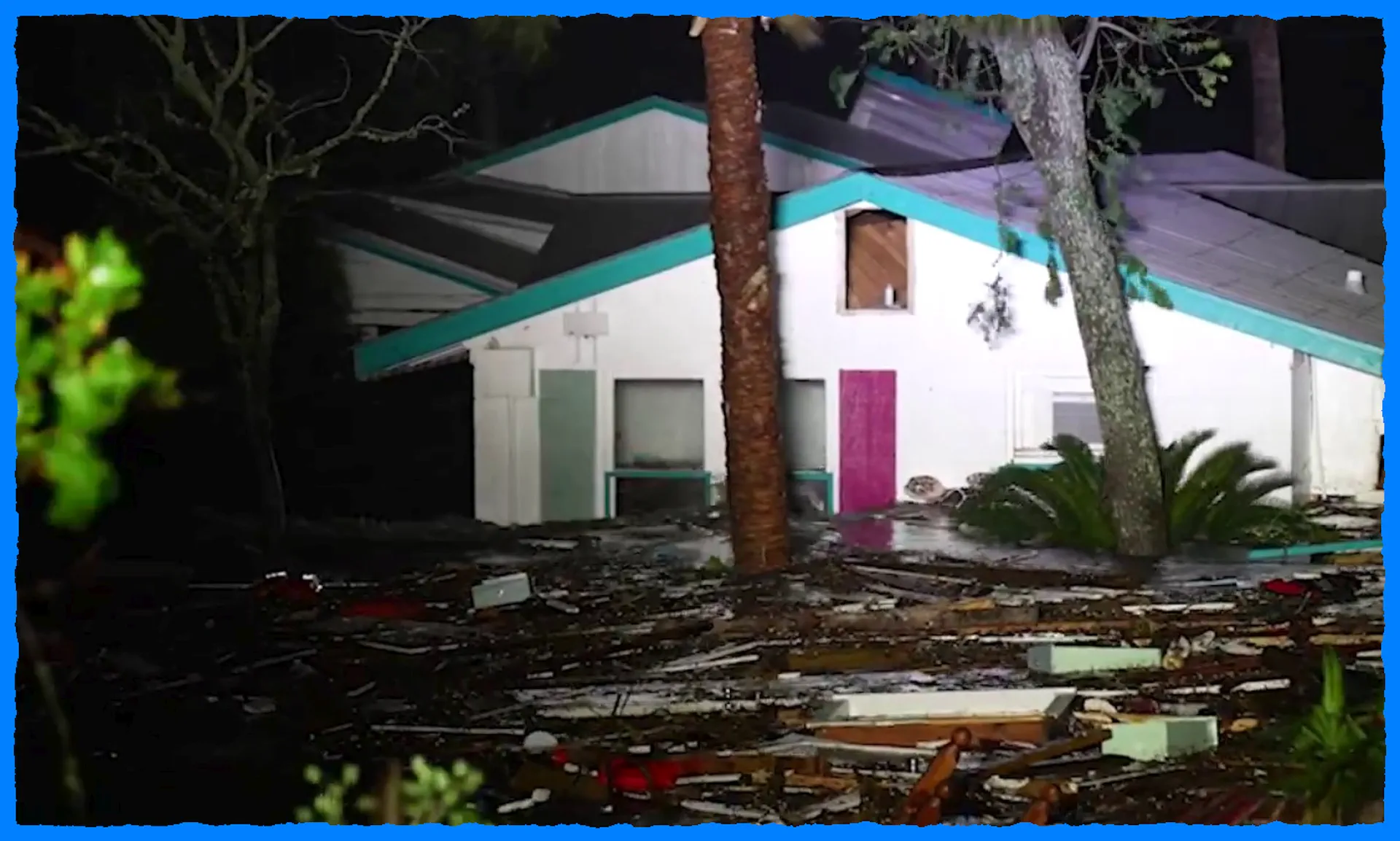
Hurricane Helene: Unprecedented Storm Surge Devastates Florida's Gulf Coast

Hurricane Helene, a catastrophic Category 4 storm with sustained winds of 140 mph, made landfall between Tallahassee and Tampa on September 26th, leaving an unprecedented trail of destruction in its wake. The storm's impact transcended the typical hurricane damage, with record-breaking storm surges inflicting catastrophic flooding across Florida's vulnerable Gulf Coast. Six states proactively declared states of emergency in anticipation of the cyclone's wrath, yet the scale of the devastation still proved overwhelming.
Record-Breaking Storm Surge:
The most striking feature of Hurricane Helene was the sheer magnitude of its storm surge. Coastal communities experienced water level rises far exceeding historical precedents, with Cedar Key, a small town north of Tampa, reporting a surge exceeding 10 feet. Live video footage captured the terrifying spectacle of waves crashing against homes as the water relentlessly climbed to over six feet. The situation was even more dire in nearby Steinhatchee, where eyewitness accounts and photographs documented mobile homes being tossed around by a storm surge estimated to be over 8 feet. These surges surpassed even those seen during Hurricane Idalia in 2023 and the devastating 1993 Superstorm, highlighting the unprecedented nature of Helene's impact.
The lack of observation sites in certain areas, particularly southeast of Tallahassee, prevents precise measurement of the storm surge height in those regions. However, pre-hurricane forecasts predicted a potentially catastrophic rise of 15-20 feet, a grim prediction that may have tragically been realized in some areas. The full extent of the damage in these less-monitored regions remains to be seen as assessment efforts are hampered by the ongoing emergency response.
Widespread Devastation and Emergency Response:
The impact of Helene extended far beyond Cedar Key and Steinhatchee. The Tampa Bay and Fort Myers metropolitan areas faced widespread flooding, necessitating extensive water rescue operations. Deputies and first responders utilized boats and other specialized equipment to conduct door-to-door checks on residents trapped in their homes. In some counties, the sheer danger of the conditions forced authorities to suspend rescue operations, underscoring the perilous situation.
The urgency of the situation was vividly depicted in reports of residents using kayaks to navigate the flooded streets and avoid the hazardous floodwaters. Families separated from loved ones in the affected coastal areas turned to social media for assistance, adding to the widespread sense of desperation and uncertainty. The Pasco Sheriff's Office, for instance, publicly reported ongoing water rescue efforts along the US 19 corridor, highlighting the scale of the response operation.
Preparation and Evacuation:
The Taylor County Sheriff's Office issued a chilling pre-storm warning, advising residents who chose not to evacuate to write their contact information on their arms or legs using a permanent marker. This desperate measure highlighted the potential for casualties and the difficulty of identification amidst the devastation. Despite the warnings, FOX Weather cameras captured vehicles still moving during the peak of the storm, raising concerns about the number of residents who disregarded evacuation orders. The exact number of those who remained is unknown, and the full extent of casualties may not be known for some time.
Long-Term Impact and Recovery:
State officials have acknowledged that it could take days, if not weeks, to fully assess the damage inflicted by Hurricane Helene. The immediate focus remains on search and rescue operations and providing essential aid to survivors. The long-term recovery process promises to be challenging and resource-intensive. The reconstruction of damaged homes and infrastructure, coupled with the emotional and psychological toll on affected communities, will require significant time, funding, and collaborative effort.
While the immediate aftermath is dominated by scenes of devastation and emergency response, the long-term impact of Hurricane Helene's record storm surge will continue to shape the future of Florida's Gulf Coast. The storm serves as a stark reminder of the increasing vulnerability of coastal communities to extreme weather events and the critical need for improved infrastructure, strengthened building codes, and effective disaster preparedness strategies. The lessons learned from Helene's unprecedented storm surge must inform future mitigation and adaptation efforts to protect lives and property in the face of increasingly frequent and intense hurricanes.
Amidst the widespread destruction, there were instances of resilience and preparedness that provided a small measure of relief. The successful deployment of AquaFence barriers around Tampa's only Level 1 trauma center prevented flooding and protected a vital medical facility. This demonstrates the potential benefits of investing in preventative measures and emphasizes the importance of incorporating protective infrastructure in coastal development planning.
Hurricane Helene's catastrophic impact on Florida's Gulf Coast serves as a sobering testament to the immense power of nature and the urgent need for ongoing investment in disaster preparedness, resilient infrastructure, and effective emergency response systems. The full extent of the damage and loss remains to be seen, but the lasting legacy of Helene will undoubtedly influence future disaster management strategies and reshape the landscape of coastal resilience for years to come.